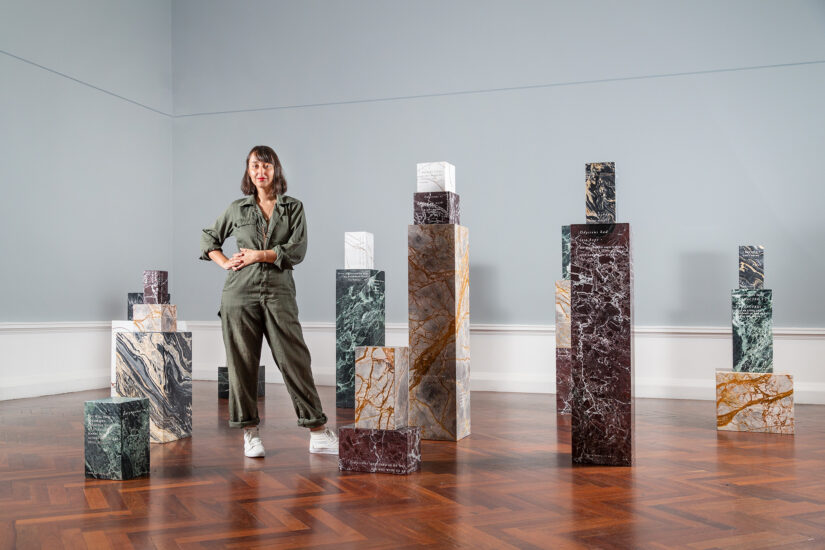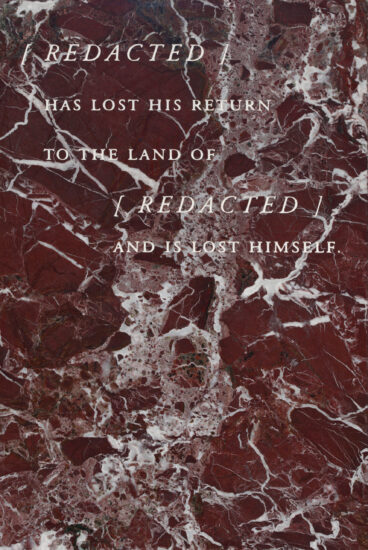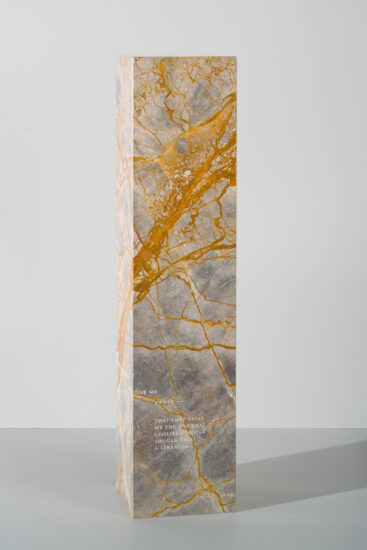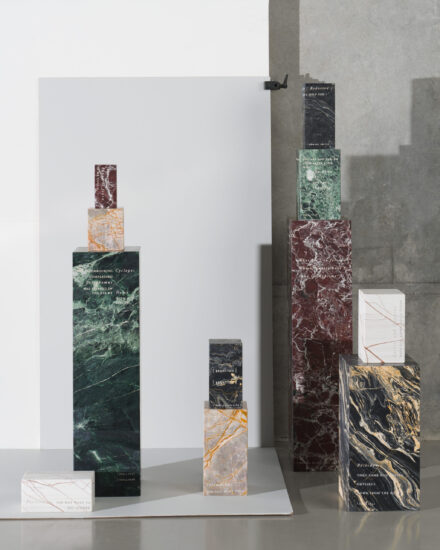Yavuz Gallery is pleased to announce its participation at Art Basel Hong Kong, with a large-scale installation in the Encounters sector by Stanislava Pinchuk.
Titled The Wine Dark Sea, Pinchuk’s work tells the story of the leaked Nauru and Manus Island cables alongside Homer’s Odyssey.
The Nauru and Manus Island cables are one of the largest cache of leaked documents within Australia’s asylum seeker detention programme, and revealed devastating assaults, sexual abuse, child abuse and living conditions endured by asylum seekers held by the Australian government.
Engraved into the stone works, near-identical phrases have been taken from both sources, and their protagonists swapped; Odysseus becomes [REDACTED], and vice versa. While we embrace Homer’s Odyssey as the first ’migrant novel’ and as a key foundation to our understanding of both literature and democracy – we are perhaps unwilling to do so for the exact same narratives of displacement, frustration and exile in our time and on our own doorstep.
The artwork speaks to the core themes of the Odyssey; of hospitality – and how we treat our neighbours and our guests, at best exemplified by the Phoenicians and at worst by the Cyclopes. Of what it means to be in seemingly permanent exile, shuttled from island to island in despair, without only the distant prospect of reaching home; exemplified by Odysseus and his men, but also by those who wait, such as Penelope and Telemachus.
Both the cables and the epic of oral poetry were written and recited by many authors and contributors, and covering many subjects – eventually falling to credit under one umbrella, be it Homer or Transfield.
The text for the sculptures, is likewise in fragment, taken from copies of copies of leaked cables and the journalists’ notes – as well as multiple poetry and prose versions and translations of the Odyssey.
The Wine Dark Sea takes this unification and fragmentation of narrative into its installation specifications, taking inspiration from the Tomb of Homer on the island of Ios, Greece; comprised of modular and stackable stones, forever swapped and re-arranged into vernacular forms by visitors through millennia, without a single final form.
Similarly, The Wine Dark Sea after its first showing – invites curators and organisers of ensuing exhibitions, or honorary guests, to arrange the sculptures and narratives to their own arrangements and interpretations.
Engraved into marble, the artwork references the earliest found relic of the Odyssey. All stones have been taken and transported themselves across the sea, from around the world and cut and engraved by grave-makers, in reference to Homer’s Tomb.
The artwork is a personal meditation on ideas of home and of migration and welcome to Australia; as well as a consideration of the White Australia policy’s ongoing legacy and practice in the illegal off-shore detention of asylum-seekers, universally condemned by democracies and inter- governmental peace organisations alike.




